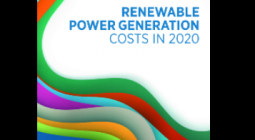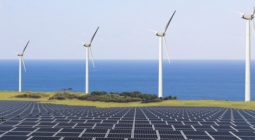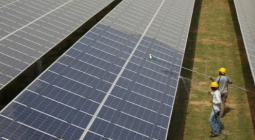Renewables Were the World’s Cheapest Source of Energy in 2020, New Report Shows
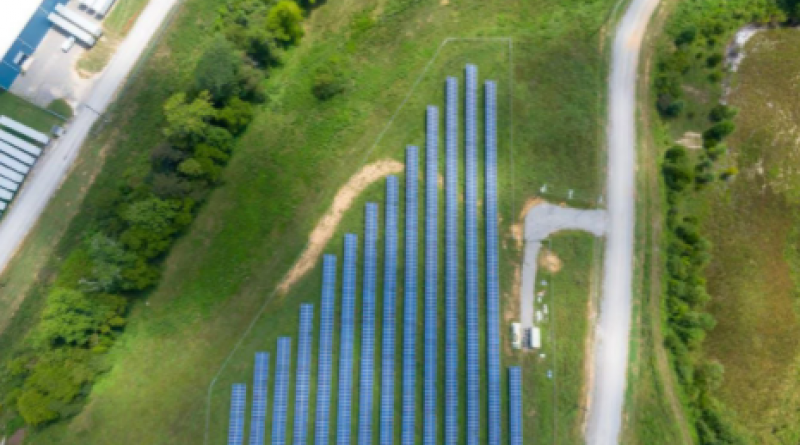
- The cost of renewable technologies like wind and solar is falling significantly, according to a new report.
- This is fuelling the rise of renewables as the world's cheapest power.
- The cost of large-scale solar projects has plunged 85% in a decade.
- Retiring costly coal plants would also cut around three gigatonnes of CO2 a year.

Renewables are now significantly undercutting fossil fuels as the world's cheapest source of power, according to a new report.
Of the wind, solar and other renewables that came on stream in 2020, nearly two-thirds – 62% – were cheaper than the cheapest new fossil fuel, according to the International Renewable Energy Agency (IRENA).
This is double the equivalent share for 2019.
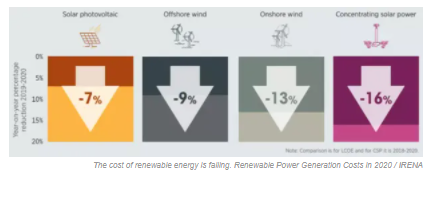
Cheap Renewables Are Good News
IRENA's report, Renewable Power Generation Costs in 2020, finds that costs for renewable technologies are continuing to fall "significantly" year-on-year.
"Today, renewables are the cheapest source of power," said IRENA's Director-General Francesco La Camera.
Cheaper renewables give developed and developing countries a compelling reason to phase out coal while meeting growing energy demands, saving costs and adding jobs, IRENA said.
Retiring costly coal plants would also stop the emission of about three gigatonnes of CO2 a year – 20% of the reduction in emissions needed by 2030 to avert climate catastrophe.
Emerging economies will save up to $156 billion over the lifespan of the renewable projects added in 2020 alone, the agency added.
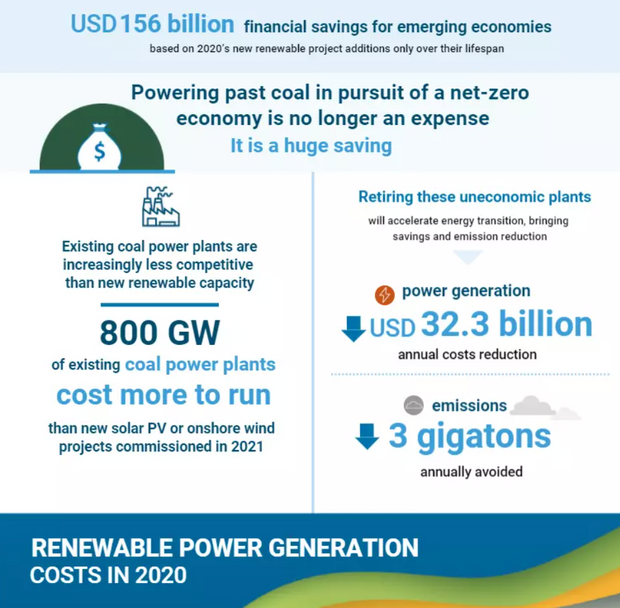
Falling Cost of Renewables
The report found a 16% fall in the cost of concentrating solar-thermal power technology – systems that use mirrors to reflect and concentrate sunlight onto a receiver.
The cost of onshore wind projects fell by 13%, and offshore wind projects by 9%.
Solar photovoltaics (PV) – the conversion of light into electricity using semiconducting materials – saw project costs fall by 7%. IRENA reported that the cost of electricity from utility-scale solar PV plunged 85% in the decade to 2020.
IRENA's report also covers hydropower, geothermal, bioenergy and renewable heat.
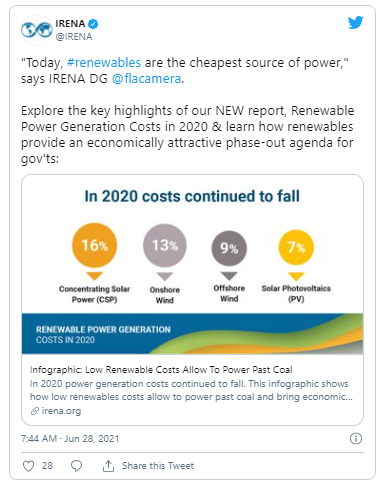
Financing the Transition to Renewable Energy
The report follows the International Energy Agency's (IEA) conclusion in its World Energy Outlook 2020 that solar power is now the cheapest electricity in history. The technology is cheaper than coal and gas in most major countries, the outlook found.
Another IEA study, Net Zero by 2050, reports that carbon neutrality is possible by 2050 – but only with big changes. This includes huge cuts in the use of coal, oil and gas – and substantial investment in renewables.
The World Economic Forum collaborated with the IEA and the World Bank to produce Financing Clean Energy Transitions in Emerging and Developing Economies, a special report on renewables investment.
This predicts that emerging and developing economies will need to increase their annual clean energy investment by more than seven times – from less than $150 billion in 2020 to over $1 trillion by 2030 – to put the world on track to reach net-zero emissions by 2050.
9 July 2021
EcoWatch

